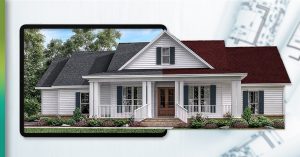Building owners and local residential roof repair contractors have been using cool roofing products for commercial, industrial, and residential buildings for over 20 years. They can be installed on low-pitched roofs (such as the flat or slightly pitched roofs typical of commercial, industrial, and office buildings) or the steep-pitched roofs used in many residential and commercial buildings.
High solar reflectance, or albedo, is the most important characteristic of a cool roof, as it helps to reflect sunlight and heat away from a building, lowering the roof temperature. High thermal emissions also play a role, especially in warm and sunny climates. Together, these properties ensure that roofs absorb less heat and remain up to 28–33°C cooler than conventional materials during peak summer weather. There are many new techs to develop a City.
The EPA and the Department of Energy (DOE) help consumers and other buyers identify the most energy-efficient roofing products through the ENERGY STAR program. Roofing materials with the ENERGY STAR label meet the minimum solar reflectance and reliability criteria. EXIT, EXIT EPA WEBSITE. It’s been more than 15 years since the data from 2006 came in. ENERGY STAR partners made shipments of chilled roofing products more than 25% of the time for commercial roofs and 8% for homes.
Costs and benefits
Cool roofs provide several benefits beyond mitigating urban heat islands, including:
As this house shows, cool-colored metal roofs lend themselves well to the market with steep slopes. (Photo courtesy of CRRC/Custom-Bilt Metals)
- Less energy consumption: A cool roof gives off less heat to the underlying building, keeping the building cooler and using less energy for air conditioning.
- Reduced air pollution and greenhouse gas emissions: By reducing energy consumption, cool roofs reduce the production of associated air pollution and greenhouse gas emissions.
- Improved human health and comfort: Cool roofs can lower the air temperature in air-conditioned and non-air-conditioned buildings, preventing heat-related illness and death.
Cool roofs lead to some desired heat gain in winter. In general, however, cool roofs lead to net energy savings, especially in high electricity prices.
While costs can vary widely depending on location and local conditions, cool roof coatings on a low-pitched roof can cost $0.75–$1.50 per square foot, while single-ply cool roof membrane costs range from $1.50–$1.50 per square foot. Each square foot costs $3.00.The cost premium for cool roofs versus conventional roofing materials ranges from 0 to 5 or 10 cents per square foot for most products or from 10-20 cents for a built-up roof with a cool coating used in place of smooth asphalt or aluminum coating. 2
A California study found that cool roofs yield an average annual net savings of nearly 50 cents per square foot. This number includes the price premium for cool roofing products and increased heating costs in the winter, energy savings in the summer, savings from downsizing cooling equipment, and lower labor and material costs over time due to the longer lifespan of cool roofs in comparison with conventional roofs.
For more information
More details are available in chapter four of the EPA’s Reducing Urban Heat Islands: Compendium of Strategies, which covers the following topics:
- The cool roof features that aid in the reduction of urban heat islands
- Types of cool roofing
- The Benefits and Costs of Cool Roofs
- Measurement and certification of cooling roof products
- Installation and maintenance of cooling roofs
- Tools and resources to further explore this technology

